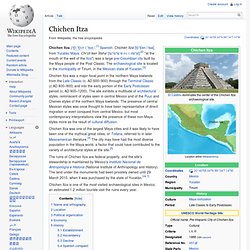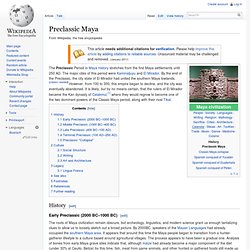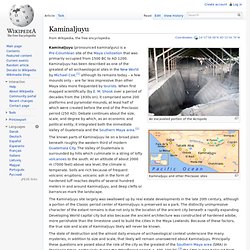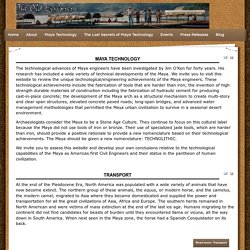

Chichen Itza. Chichen Itza (/tʃiːˈtʃɛn iːˈtsɑː/,[1] Spanish: Chichén Itzá [tʃiˈtʃen iˈtsa], from Yucatec Maya: Chi'ch'èen Ìitsha' [tɕʰɨɪʼtɕʼeːn˧˩ iː˧˩tsʰaʲ];[2] "at the mouth of the well of the Itza") was a large pre-Columbian city built by the Maya people of the Post Classic.

The archaeological site is located in the municipality of Tinum, in the Mexican state of Yucatán.[3] Chichen Itza was a major focal point in the northern Maya lowlands from the Late Classic (c. AD 600–900) through the Terminal Classic (c.AD 800–900) and into the early portion of the Early Postclassic period (c. AD 900–1200). The site exhibits a multitude of architectural styles, reminiscent of styles seen in central Mexico and of the Puuc and Chenes styles of the northern Maya lowlands. The ruins of Chichen Itza are federal property, and the site’s stewardship is maintained by Mexico’s Instituto Nacional de Antropología e Historia (National Institute of Anthropology and History).
Name and orthography[edit] Location[edit] Google Image Result for. Machu-picchu-3709-1366x768.jpg (1366×768) TheGra31.gif (600×715) Preclassic Maya. The Preclassic Period in Maya history stretches from the first Maya settlements until 250 AD.

The major cites of this period were Kaminaljuyu and El Mirador. By the end of the Preclassic, the city state of El Mirador had united the southern Maya lowlands. [citation needed] However, from 100 to 300, this empire began to decline, and the city was eventually abandoned. It is likely, but by no means certain, that the rulers of El Mirador became the Kan dynasty of Calakmul,[1] where they would regrow to become one of the two dominant powers of the Classic Maya period, along with their rival Tikal.
History[edit] Early Preclassic (2000 BC–1000 BC)[edit] Middle Preclassic (1000 BC–400 BC)[edit] By around the year 1000BC, centuries of agricultural village life had begun to form the beginnings of a complex society: Prestige goods such as obsidian mirrors and jade mosaics began to appear, increasing the demand for more extensive trade. Late Preclassic (400 BC–100 AD)[edit] Preclassic "Collapse"[edit]
Kaminaljuyu. An excavated portion of the Acropolis Kaminaljuyu and other Preclassic sites Kaminaljuyu (pronounced kaminalχuʲu) is a Pre-Columbian site of the Maya civilization that was primarily occupied from 1500 BC to AD 1200.

Kaminaljuyu has been described as one of the greatest of all archaeological sites in the New World by Michael Coe,[1] although its remains today – a few mounds only – are far less impressive than other Maya sites more frequented by tourists. When first mapped scientifically (by E. M. The known parts of Kaminaljuyu lie on a broad plain beneath roughly the western third of modern Guatemala City. The Kaminaljuyu site largely was swallowed up by real estate developments in the late 20th century, although a portion of the Classic period center of Kaminaljuyu is preserved as a park. The state of destruction and the almost daily erasure of archaeological context underscore the many mysteries, in addition to size and scale, that likely will remain unanswered about Kaminaljuyu. Maya Technology. Maya Technology The technological advances of Maya engineers have been investigated by Jim O'Kon for forty years.

His research has included a wide variety of technical developments of the Maya. We invite you to visit this website to review the unique technological/engineering achievements of the Maya engineers. These technological achievements include the fabrication of tools that are harder than iron; the invention of high strength durable materials of construction including the fabrication of hydraulic cement for producing cast-in-place concrete; the development of the Maya arch as a structural mechanism to create multi-story and clear span structures, elevated concrete paved roads; long-span bridges, and advanced water management methodologies that permitted the Maya urban civilization to survive in a seasonal desert environment. Archaeologists consider the Maya to be a Stone Age Culture. Transport Read more: Transport Jadeite is a very hard and durable material.